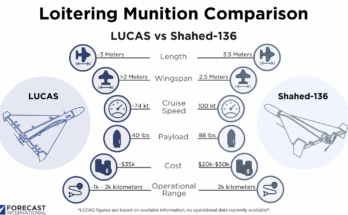The U.S. Senate passed the National Defense Authorization Act for Fiscal Year 2020 on June 27 with a bipartisan vote of 86-8. The Senate-passed bill supports a total of $750 billion for national defense programs, including Department of Defense programs and national security activities of the Department of Energy.
The national security topline figure matches the president’s FY20 budget request. The House version of the FY20 defense authorization bill comes in at $733 billion, which is the level originally planned by the White House before the president increased the request to $750 billion. The House Armed Services Committee’s ranking member Mac Thornberry (R-Tex.) had proposed an amendment to insert $17 billion in additional funding in order to reach the $750 billion topline, but the amendment was not adopted by the committee. The differences between the House and Senate bills will have to be hammered out in a conference agreement.
A similar battle will take place on the appropriations side of the budget process, which actually determines how much money the Pentagon has available to obligate in a given year. The House has already passed its version of the FY20 defense appropriations bill, despite the fact that the legislation currently exceeds Budget Control Act spending limits. The Senate Appropriations Committee has not released its version of the defense appropriations bill, but the legislation is expected to come in with a $750 billion topline similar to the chamber’s authorization bill. Again, the $17 billion difference between the appropriations bills will have to be settled in conference.
The Senate Armed Services Committee released the following highlights of its version of the defense authorization bill. The bill:
- Provides for a 3.1 percent pay raise for 2.15 million uniformed service members—the largest in a decade.
- Reforms the Military Housing Privatization Initiative to improve quality of life for military families.
- Authorizes critical investments in battle force ships, aircraft, and other equipment to maintain the U.S.’s combat advantage.
- Maintains a secure, credible nuclear deterrent.
- Supports U.S. allies and partners to counter strategic competition.
- Establishes the United States Space Force under the Air Force.
- Modernizes the military technology and capabilities of the U.S., including artificial intelligence and hypersonic weapons.
- Advances the Department of Defense’s cybersecurity strategy and addresses the U.S.’s cyber warfighting capabilities.
On the Senate floor this week, a substitute amendment that includes 93 bipartisan amendments was adopted. These amendments included:
- The Intelligence Authorization Act.
- The Maritime Administration Authorization Act.
- The Fentanyl Sanctions Act, which adds sanctions on drug manufacturers from China and financial institutions that knowingly facilitate and participate in the trafficking of synthetic opioids and authorizes additional funding and resources to combat foreign opioid trafficking.
- An amendment allowing the families of the 1983 Marine Barracks bombing victims to access $1.68 billion in Iranian funds currently held by Clearstream.
- An amendment that bans the purchase of rail cars and buses from certain state-owned enterprises, excluding pre-existing contracts.
- An amendment to address the risks and challenges associated with per- and polyfluoroalkyl substances (PFAS).
- An amendment protecting the U.S. military’s right to self-defense.
- An amendment expressing the sense of Congress that Turkey should not accept delivery of the S-400 air defense system from Russia.
- The Otto Warmbier Banking Restrictions Involving North Korea Act of 2019, which expresses the sense of Congress that sanctions should be used to halt North Korea’s nuclear and ballistic missile programs.
- An amendment that supports expanding plutonium pit production capacity.
- An amendment that calls on Hong Kong’s authorities to withdraw Hong Kong’s extradition bill and authorizes financial sanctions against those violating human rights in Hong Kong.
- An amendment to the Servicemembers Civil Relief Act that allows spouses of catastrophically injured or deceased service members to terminate leases of premises and vehicles.
- An amendment that extends the limitation on military cooperation between the United States and Russia.
- An amendment to improve aviation workforce development.
- An amendment to require an updated strategy to counter the malign influence of Russia and China.
- The Utilizing Significant Emissions with Innovative Technologies Act (USE IT Act), which supports carbon utilization and direct air capture research.
- An amendment to support reducing the reliance of the U.S. on foreign sources for rare earth minerals.
- An amendment to address preparation for, response to, and recovery from electromagnetic pulses and geomagnetic disturbances.
- An amendment that authorizes other federal agencies to participate in the Skillbridge program, which connects transition service members to job training.
- Two amendments supporting overseas absentee ballot voting for members of the armed forces.
- Two amendments that enhance the Defense Production Act to ensure the security of of the U.S. defense supply chain.
Shaun's deep-rooted interest in military equipment continues in his role as a senior defense analyst with a focus on the United States. He played an integral role in the development of Forecast International's U.S. Defense Budget Forecast, an interactive online product that tracks Pentagon acquisition programs throughout the congressional budget process. As editor of International Military Markets – North America, Shaun has cultivated a deep understanding of the vast defense markets in the United States and Canada. He is a regular contributor to Forecast International's Defense & Security Monitor blog and has co-authored white papers on global defense spending and various military programs.




